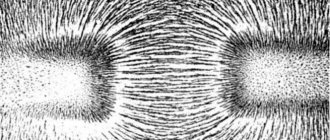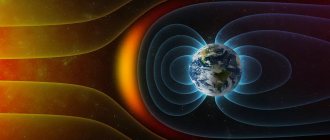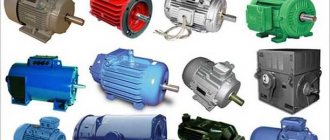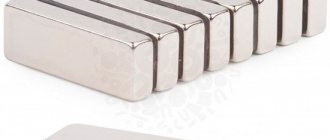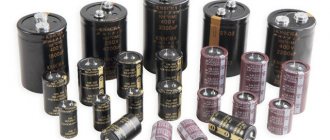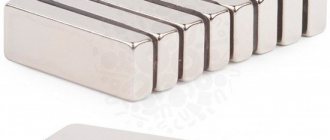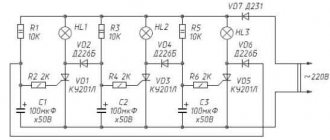In our world there are a lot of different things, the origin of which has a completely scientific explanation. But despite this, they still cause a lot of controversy and enormous interest among many people. One of these pressing issues is the use of the most powerful magnets. There are a lot of magnets in the world, each of which is unique in its own way. But which one is the most powerful?
An unusual and powerful star magnet
The magnetic neutron star, called Gamma Ray Relay 1806-20, is the most powerful magnetic object in the Universe. It suppresses enough magnetic force to slow a locomotive from a distance of a quarter of a million miles (the path from the Earth to the Moon).
At the moment, only ten such unusual objects have been discovered. With a magnetic field of 100 billion Tesla, the star eclipses the Earth. The Earth's magnetic field is 0.00005 tesla. It is unlikely that any man-made device will ever approach the power of this most powerful magnet from space.
Magnetic records
Today we’ll talk about record magnets and a little about why they are needed.
Magnets of this design (resistive Bitter magnets) remain the workhorses of high magnetic field laboratories.
The main consumer of the strongest magnets throughout the 20th century was science. Fusion facilities, accelerators, nuclear magnetic resonance research, neutron physics, cooling to temperatures below 1 kelvin and much more require the highest possible value of magnetic intensity/induction (when considering the “strength” of the field, these values can be considered synonymous).
Another record-breaking magnet, which we will not talk about today, is the double dipole of the LHC accelerator - its main ring is made up of 1232 of these. A field of ~9 T is created by a superconducting NbTi cable cooled to 1.8 K
Before moving on to specific designs, it is worth remembering that the energy of the magnetic field, the strength of its effect on electric charges and diamagnets, depends on the induction B as a square. Those. a 10 Tesla field carries 100 more energy than a 1 Tesla field. In this case, an important characteristic is the field pressure on the current tubes, which is equal to 4 B^2 atmospheres. Those. For a magnet designer, a field of 100 T is equivalent to trying to create a cylinder for 40,000 atmospheres - an extremely difficult task. This also shows that powerful magnets with a large working volume (like ITER) are even more complex than just powerful magnets.
Another unusual record is the superconducting magnets of the German stellarator Wendelstein 7-X with complex geometry.
So, we'll start by defining some coordinates. Permanent magnets produced by industry are characterized by field values from 0.01 to 0.5 T, and neodymium magnets of 0.5 T are already perceived as “strong”. The record that can be squeezed out of permanent magnets is ~1.5 T at the very surface.
In electrical machines (motors, generators, transformers), the field inside iron magnetic circuits is limited by the saturation of the iron, with fields somewhere around 1.8-2.2 T. In the air gap of a typical asynchronous motor, you will most likely see a field of 0.5-0.8 T, for BLDC motors with record-breaking energy and mass characteristics (4-5 kW/kg) - 1...1.2 T.
A rather original use of the power of neodymium magnets is a 19 kW electric motor (red cylinder in the picture), 2 of which turn the oxidizer and fuel pumps on the new Rutherford rocket engine from Rocket Lab.
Somewhere from 1.5 T, conventional copper electromagnets begin to experience difficulties, primarily with heat removal. The need to alternate copper with water cooling tubes, as well as the growing inter-turn voltage, inflates the size of the magnet much faster than the field grows. The turns that are located further from the working volume make a relatively small contribution to the field, which means the current is mainly spent on heating the magnet, and not on creating a field.
Copper
However, since the 1930s and almost until now, record stationary fields have been achieved in almost ordinary water-cooled copper magnets. These are the so-called Bitter magnets, which are a copper plate twisted into a spiral and having a clever system of longitudinal cooling channels. These magnets are characterized by monstrous current densities (up to 700 A/mm^2), electrical powers of 1.10 and even 30 megawatts, and cooling water flow rates of tens and hundreds of liters per second. The first 10 T magnet was launched in 1936, and for the next 30 years it held the record for a stationary field.
American bitter magnets from the 60s at 25 Tesla.
This design of magnets was then repeatedly optimized, and today the field record in such magnets has been brought to 38.5 T in the Chinese laboratory CHMFL. The magnet power was 28.5 MW with a cooling water flow rate of 500 liters per second (by the way, it seems that approximately the same amount must be added to the magnet power for the pumps that pump this water through the magnet). The current is about 36 thousand amperes. In this case, the record field is achieved in a volume with a diameter of only 32 mm and a length of about 70 mm.
Chinese record resistive magnet - one run of the solenoid spiral (made of CuAg alloy), a cut and a set of coaxial coils.
Resistive magnets today have reached the limits of the capabilities of materials, and the maximum available field in them is growing mainly extensively - due to increasing the power of the power supply and cooling systems, and increasing the number of coils. Such magnets today are mainly used to study a wide variety of physical phenomena in small samples, often at low temperatures. Therefore, such magnets work in centers of collective use, when physicists bring their samples and equipment, install it on the magnet and measure the quantities they need. For small samples it is quite convenient to use magnets with a small clearance, such as 20-30 mm.
30T bitter magnet top without cover. Here you can see the opening of the research chamber and the slots for supplying cooling water.
However, there is another application of large magnetic fields today - this is NMR tomography, i.e. construction of tissue density maps due to the interaction of hydrogen with radio emission in a strong magnetic field. The higher the field, the greater the spatial resolution of the system. Such systems require a fairly large working volume of the magnet as well as high field homogeneity. Research in the field of superconductivity, in turn, requires cryostats, which hardly fit into a diameter of 32 mm, and for some superconductors a larger field is needed.
Looking ahead a little - a superconducting NMR tomograph with an ultra-high field (21T), a lumen of 110 mm and an example of the resulting image with a resolution of 26 microns
Therefore, since the 80s of the 20th century, the direction of hybrid magnets has appeared, the idea of which is to place a Bitter magnet inside a superconducting one, the fields of which will add up. This allows the field to be raised further without increasing the already monstrous requirements for power and cooling water consumption.
Hybrids
Inserting a Bitter magnet inside a superconducting one means that the latter must have a working clearance of 400-800 mm, i.e. significantly more than the records we've seen before. Magnets with large working volumes but a smaller field came to the laboratories of strong magnetic fields from tokamak developers, where in the late 70s superconducting magnets were created based on cold superconductors - tin and titanium niobate. In the mid-80s, in the French laboratory of strong magnetic fields LNCMI, they created a hybrid magnet from 11T superconducting and 22T bitter magnet with a total field of 31T, and in 2000, the American National MagLab launched a hybrid installation with a field of 45T, which is still a record among all magnets with constant field.
Housing of the entire magnet (left) and cryostat (right)
Cross-section of a hybrid magnet using a cryostat. By the way, the design of the external superconducting magnet designed for this installation was then used in three more record-breaking magnets.
The 45 tesla hybrid uses three external superconducting magnets and 4 internal resistive “Bitter Florida” magnets. The resistive part consumes 29 megawatts at a current of 74 kA and creates a field of 31 T. The superconducting part of the magnet creates a field of 14 T and consists of external windings of NbTi and internal windings of Nb3Sn, operates at a current of 8 kA at a temperature of 4.2 K. Clearance superconducting magnet cryostat - 500 mm.
45T Hybrid Superconducting External Magnet
And an internal bitter magnet. So 2.5 meters of the body turns into a 32 mm working chamber.
For comparison, let me remind you that the ITER toroidal magnet has a wiring current of 68 kA, a field of 12.8 T with a clearance of 9000x7000 mm, i.e. One can imagine how far ITER has advanced the technology of low-temperature superconducting magnets.
By the way, in laboratory magnets they use a conductor with a much lower current, winding more turns - this simplifies the power supply system and the conductor itself. The downside to this is greater electrical stresses in the system when the superconductor suddenly returns to its normal state.
In addition to ITER, these technologies moved forward with the advent of industrial high-temperature superconductors. If low-temperature SPs, in principle, do not allow creating fields above 22 T, i.e. they can only be part of a record magnet, then for HTSC this limit expands to at least 45 T.
Dependence of the critical current density on the field for different superconductors. By the way, have you ever wondered what kind of equipment is used to create these diagrams and why they rest on 45T?
Today, a new direction in creating record-breaking magnets is completely superconducting ones, and now all the leading laboratories in the world (China, the Netherlands, France, USA) are designing SP magnets for 30+ T. Here, too, the Florida MagLab is still ahead of everyone, where the assembly of a completely superconducting magnet for 32 has begun T. Here 15 T will be created by external magnets made of NbTi and Nb3Sn, and another 17 by a two-layer HTSC magnet made of YBCO tapes. “High-temperature” superconductors are used here as having much higher critical fields at liquid helium temperature than “low-temperature” ones.
32T fully superconducting magnet project
The technology of this magnet required almost 10 years of development; the main problems lay in the area of very high ponderomotive forces from a powerful magnetic field on current-carrying turns. Mechanical stress in YBCO coils reaches 700 MPa - here, by the way, it helps that the HTSC tape essentially consists mainly of a nickel alloy with high strength characteristics - copper cannot withstand such stress.
R&D of high-field HTSC magnet.
The second class of problems is associated with emergency loss of the superconducting state and current output from the coils. In particular, to avoid burnout due to the slow propagation of the normal zone, heaters are built into the coils, which, when a transition is detected, heat the entire coil so that the field energy is released more evenly.
Just recently, an internal working coil was made from HTSC tape; soon we can expect the launch and assembly of the magnet.
This magnet will have a “cold” working volume, and is well suited for studying condensed states of matter and quantum effects in solids, while in terms of operating costs this is a completely different class of devices, in particular the cryostat, cryo-supply system and external SC magnet from NTSP are serial products manufactured by Oxford Instruments.
In general, Oxford instruments is the largest supplier of superconducting magnets, mainly for all scientific and laboratory applications in fields 3-15T. In the ITER project, this company, for example, supplies 6T magnets for gyrotrons
In general, before moving on to the next record holders, I would like to talk about several applications of such magnets beyond simply providing a stand with a high magnetic field.
One of the main applied consumers of serial high-field magnets is NMR spectrometers, a working tool for chemists. The Bruker company, in particular, mass-produces spectrometers with a field of up to 23.5 T (such installations, by the way, have quite big problems with shielding such a field from surrounding people and objects).
Historical increase in the frequency of NMR spectrometers, which allows improving the quality of NMR spectra.
The second serial consumer is high-resolution NMR tomographs, which are used in biological and neurobiological research.
Here the fields reach 21T. Finally, a slightly less practical consumer are centers with neutron sources; one of the methods for studying magnetic quantum phenomena is the study of neutron scattering on matter in a strong magnetic field, as well as refrigerators for sub-microkelvin temperatures, requiring fields from 8 to 20 T. Assembly video 26T magnet with large clearance for studying the scattering of polarized neutrons on matter at Helmholtz-Zentrum Berlin
Pulsed magnets
The main engineering problems of creating high-field magnets - heat dissipation and strength - are greatly simplified if we move from a constant magnetic field to a pulsed one. In turn, pulse systems are divided into reusable and disposable 
Interestingly, the pioneer in the field of pulsed magnets was Peter Kapitsa, who worked on similar installations in the 20s at the Cavendish Laboratory in England. By closing the output of a large rotating generator to a solenoid, he received up to 50 T within a few milliseconds. This approach made it possible to measure many quantities associated with large magnetic fields even at 20x, and with modern recording technology such a field can generally be called almost quasi-stationary.
Kapitsa and his machine for creating pulsed magnetic fields.
Improving this approach, in the 60s, developers switched from rotating electromechanical energy sources to capacitors and voltage pulse generators, which made it possible to create a current density of many kiloamperes per mm^2 in a copper coil.
In combination with power reinforcement in the form of a steel matrix and cooling with liquid nitrogen (to reduce resistance, which reduces the required voltage, which facilitates insulation in such a magnet), in 2012 pulsed copper magnets reached 101.2 T for 1 millisecond - this is the value for today is a record (and it belongs to the collaboration of the American nuclear weapons laboratory LANL and the Florida MagLab).
Video about achieving a record field value of 101.2 T. However, little is visible here, and in general there is a feeling that the design of the magnet is classified, only general values are known
This value is also achieved with the help of several nested coils, the outer ones of which give a long pulse (about 2 seconds) with an amplitude of up to 45 T, and the inner ones give a short pulse of 65 T. This scheme allows you to withstand stresses in the conductor beyond the yield point of the materials.
Interestingly, the power of such a magnet reaches several gigawatts.
A generator that is short-circuited to the external windings of a magnet to produce record-breaking pulsed fields.
Unfortunately, there are no ways to noticeably increase the field value in a reusable installation yet. However, if we are not afraid of the destruction of the installation, then 101 T is far from the limit.
The simplest option here is a piece of copper, rolled into a coil, onto which high-voltage capacitors are connected. This scheme makes it possible to obtain both 300 and 400 Tesla, albeit for a very short time (on the order of a microsecond) in a volume of several cubic millimeters, which for an experimenter who studies the topology of Fermi surfaces in solids, for example, is quite complex limitations.
Field pulse on a disposable magnet.
A rather elegant way out of these limitations was found back in the 50s through the invention of explosive magnetic generators. Here, the initial magnetic field of 10-20 T is compressed to 2800 (!) T. This is done using a metal cylindrical liner, which, with the help of a cylindrical blast wave from an explosive charge, collapses towards its axis. In this case, the longitudinal magnetic field increases approximately 100-200 times. Compared to the previous scheme, in an explosive magnetic generator it is possible to obtain a slightly longer magnetic field pulse time and a slightly larger volume for the sample, although at the cost of a much more complex experimental setup.
Explosive magnetic generator and its circuit diagram.
Back in the 50s, using VMG, various characteristics of materials in extreme magnetic fields were measured - conductivity, polarization rotation (Faraday effect), compression of the magnetic field of the atomic nucleus, etc. Another interesting result is the possibility of accelerating metal objects with such magnetic fields to speeds of the order of 100 km/s.
The field limitations of explosive magnetic generators, in turn, are again quite fundamental and are associated with the pressure of the magnetic field, which reaches tens of megabars and stops the metal liner. 3000 tesla is apparently an asymptotic limit here.
In turn, higher pressure values (gigabars) are achieved in laser implosion installations, and purely theoretically, such installations are capable of creating magnetic fields of tens of thousands and even 100 thousand teslas, albeit within nanoseconds and in micron volumes. The focused laser pulse itself from a petawatt laser has an alternating magnetic field with an amplitude even greater - a million tesla and higher. Of course, the conditions in which such a field arises (dense plasma with a temperature of hundreds of eV - tens of keV) are far from the interests of applied science, but are very interesting for fundamental science.
History of magnetic field records for different types of installations (reusable :))
Concluding the review of magnetic records, it is worth remembering about magnetars - young neutron stars with high magnetic fields. The high ones here are up to 100 billion Tesla. A magnetic field of this order, for example, has an energy density of 10^25 J per cubic meter, the equivalent of mc^2 for a substance 10,000 times denser than lead. Observations of magnetars (and ordinary neutron stars, whose fields are thousands of times smaller) allow us to better understand the behavior of matter and space in such conditions, complementing laboratory research with record-breaking magnets.
The most powerful American magnet
The most powerful magnet developed in Florida represents a technical milestone in space station construction and is an engineering feat. Researchers from the state of Florida (USA) are currently recording using a hybrid magnetic system introduced in the nineties. The powerful magnetic system, weighing 35 tons, has a magnetic field a million times greater than the Earth's magnetic field.
The most powerful electromagnet
Scientists in different countries are trying to create the most powerful magnet in the world and sometimes achieve very interesting results.
Today, the status of the strongest electromagnet is held by the installation at the Los Alamos National Laboratory (USA). The giant device, made up of seven sets of coils weighing a total of 8.2 tons, produces a magnetic field with a power of 100 Tesla. This impressive figure is 2 million times the strength of our planet's magnetic field. It is worth noting that the solenoid of the record-breaking magnet is made from a Russian copper-niobium nanocomposite. This material was developed by scientists from the Kurchatov Institute with the assistance of the All-Russian Research Institute of Inorganic Materials named after. A. A. Bochvara. Without this ultra-strong composite, the new most powerful magnet in the world would not have been able to surpass the record of its predecessor, since the main technical difficulty when operating installations of this level is maintaining integrity when exposed to the strongest magnetic pulses. The maximum recorded field strength of the electromagnet, which was destroyed by pulses during the experiment, was 730 Tesla. In the USSR, scientists, using a specially designed magnet and explosives, managed to create a pulse of 2800 Tesla. Magnetic pulses obtained in laboratories are millions of times greater than the Earth's magnetic field. But even the most powerful magnet that has been built to date is millions of times weaker than neutron stars. Magnetar SGR 1806−20 has a magnetic field of 100 billion Tesla.
Unusual magnet or giant horseshoe
Hearing this name, a huge horseshoe immediately comes to mind. However, in this case, everything is not so. We are talking about a universal magnetic system from Florida. It consists of two huge curved magnets working together. The outer layer is the most powerful magnet with supercooling and superconductivity. It has no equal among similar devices ever created by man. The magnet is constantly cooled with superfluid helium to temperatures close to absolute zero. At the center of the system is a huge resistive magnet.
This is not a horseshoe for you
If you imagined a giant horseshoe, you will be disappointed. The Florida magnet (see photo above) is actually two working in a system. The outer layer is a super-cooled, superconducting magnet. It is the largest of its kind ever created. It is constantly cooled to a temperature close to absolute zero. For this purpose, a system with superfluid helium is used - the only one in the United States specifically designed to cool this magnet. And in the center of the contraption is a massive electromagnet, that is, a very large resistive magnet.
Despite the gigantic size of the system built at NHMFL, the experimental site is extremely small. Experiments are usually carried out on objects no larger than the tip of a pencil. In this case, the sample is placed in a bottle, like a thermos, to keep the temperature low.
When materials are exposed to ultra-high magnetic fields, very strange things begin to happen to them. For example, electrons “dance” in their orbits. And when the magnetic field strength exceeds 35 Tesla, the properties of materials become uncertain. For example, semiconductors can change properties back and forth: at one moment they conduct current, at another - not.
Crowe says the Florida magnet's power will be gradually increased over five years to 47, then 48 and eventually 50 Tesla, and the research results have already exceeded his wildest expectations: “We got everything we hoped for and much more. Our colleagues are now overwhelming us with requests to give them the opportunity to experiment too.”
Some interesting moments from the tests
This huge resistor magnet is a device located at the center of the complex fixture. But despite its size, this super magnet is rarely used. The thing is that a very small test site was allocated for its testing. Because of this, the test objects are tiny and no larger than the tip of a regular pencil.
Moreover, during testing, the test sample must be cooled to a certain temperature. To do this, it is lowered into a special cylindrical reservoir with coolant.
HDD
If you type in a search engine “Neodymium magnet - where to get it at home,” then most of the answers will mention the computer’s hard drive. Indeed, a failed computer or laptop is the best “source” of neodymium components; from it you can get, perhaps, the largest magnetic plates possible in everyday life. They are like a horseshoe, 3-4 millimeters thick and an area of half a matchbox. In addition, where you can get a neodymium magnet, there are a couple of such parts. Everything will depend on the computer model.
Let us remind you once again that the neodymium alloy is quite fragile; moreover, it is, in fact, not an alloy, but a mass produced by sintering metal powder. Therefore, try to remove the plate very carefully.
The magnetic horseshoe in the hard drive is directly glued to the steel pad. To disengage this clutch, hold one end of the plate in a vise and lightly hit the opposite end several times with a heavy object. Or try removing the neodymium with a chisel. The second option is to heat it, but again, do not overdo it, since N-class magnets lose their properties when heated too much.
For those who are interested in where to get a neodymium magnet at home, there is a video online with details of disassembling a hard drive. For example, some videos say that sometimes the magnetic plates in the drive “sit” on the glue. When getting them out, do not resort to brute force, but show patience and ingenuity.
Application of magnet in medicine
Any most powerful magnet can easily find its application in medicine. The use of these devices allows us to solve the problem of modernizing modern medical equipment.
For example, the largest magnet used for tomography is located in Florida. This 24-ton giant allows you to examine the brain and spinal cord, revealing not only various diseases, but also injuries the patient once received. The higher the magnetic field, the more accurate the results. Brain University believes the use of super-powerful magnets will help in research into brain and spinal cord injuries.
Interesting facts about magnets in medicine
One of the projects plans to use functional imaging of living cells using a powerful magnet. During the experiment, scientists will learn how much brain tissue is damaged over time and how medications can affect this.
MRI technology, which also includes magnets, uses a powerful magnetic field to align the cell nuclei of the body. In this case, one magnet is stationary, while the other rotates the nuclei and generates a signal. This is what computers read. They then process and convert the received signal into a three-dimensional visual image.
Stepper motor
If you do not have average knowledge of electronics, a controller board, an interface board and an urgent need to install and run a stepper motor somewhere, then you are a happy person! Because he has every moral right to run a stepper motor under a screwdriver without remorse.
Jokes aside, it is worth adding that removing magnets from the engine is the most difficult thing. There is a high risk of damage to the product. At the same time, there will be two magnets in the engine. Most often, such units are used in all kinds of office equipment: printers, scanners, copy machines.
Do magnets affect humans?
The increasing medical use of magnets raises an obvious question: are magnetic fields good or bad for the human body? In recent years there has been much debate about the consequences of living near high-voltage power lines.
But since the magnetic field strength drops quite quickly, someone living just 50 feet from a power line would likely experience no more than two milligauss. In the latest study, there was no evidence to suggest that this level of exposure would have harmful effects on the body.
Neodymium magnets: what and how
These magnets are very powerful. They are strong and fairly safe, but heavy. Some of them can weigh hundreds of kilograms. These are unique pieces of magnetic alloy endowed with super-powerful adhesive force. Such devices can be encased in an additional steel casing, which will increase their weight and grip. They may also be devoid of such an additional shell. Accordingly, they will have less grip and weight.
Thanks to the power and strength of such devices, it became possible to lift up loads weighing up to 1000 kg.
Magnets for welding with Aliexpress
These magnets make welding easier. They hold metal objects at the desired angle, freeing the welder's hands.
Magnetic Welding Holder – Affordable
An inexpensive welding clamp that can withstand a total weight of up to 12.5 kg and is capable of fixing any object at an angle from 45 to 135 degrees. The body is made of galvanized ferrite sheet.
View on Aliexpress
Lishuai WM4-304590S+WM10-S – wear-resistant
Lot including 2 polygonal magnetic holders. They are convenient during welding, can withstand temperatures up to +200 degrees and can fix objects at an angle from 30 to 90 degrees.
View on Aliexpress
It will make cooking much easier. And the quality of work will noticeably improve due to precise fixation.
Lishuai FM1 – reliable welding holder
A powerful unit, the magnetic force of which ranges from 25 to 75 kg (depending on the user’s choice). Lishuai FM1 fixes metal objects at 45, 90 and 135 degrees. Suitable for welding, pipe installation, assembly and picking up objects.
View on Aliexpress
Lishuai MWGC1 – Welding Clamp
This is not just a holder, but a grounding welding clamp, which is designed to hold the grounding cable on a ferromagnetic surface. The device has high holding power and shear force.
View on Aliexpress
Lishuai WM7 – a convenient model
The rating is completed by an ergonomic welding holder that will fix the metal pipe at an angle of 30, 60 and 90 degrees. The design is durable and can withstand loads of up to 35 kg.
View on Aliexpress
What are search magnets used for?
The most powerful search magnets are small devices used to locate valuable metal items and objects. Such finds always have historical significance and are important for various types of research companies, archaeological societies and other lovers of antiques.
As a rule, they consist of powerful neodymium magnets, rubber and steel cases, and other components. The dimensions of the devices are quite compact, so they can be carried in your hands. They can be used not only on the surface, but also in wells, swamps, and rivers. They can be double-sided or single-sided, and also differ in their weight and power.
Stepper motor
Stepper motors are found in all kinds of office equipment: scanners, printers, copy machines, etc. And if such equipment fails, the question is “where can I get a neodymium magnet?” can be solved in literally half an hour.
In such devices, rotor elements are made from neodymium. The magnetic ring here is put on a rod protruding outside the body and sandwiched between two plastic wheels. The most convenient way to remove the required part is to hold one of the wheels in a vice and knock out the axle. Do this carefully, remember that neodymium alloy is fragile, it can break and then you will have to think again about where to get neodymium magnets. Helpful advice: to avoid damaging the desired part, only clamp the top gear.
Powerful and strong neodymium magnets
There are permanent magnets that can have the same attractive strength as the most powerful neodymium magnets. They are called AlNiCo magnets. Such devices are usually created on the basis of aluminum, cobalt and nickel. When producing larger magnets, casting and its complex shapes are used.
According to experts, these types of magnets have excellent thermal characteristics. Thanks to this, they have found their use in the production of automotive ABS braking systems, products with reed switches (for example, fuel supply sensors) and guitar pickups.
As you can see, magnets are an important part of our lives. They are used in various areas of our activities and for different purposes.
Loudspeakers
You can also get magnetic components from so-called “columns”. However, if you google “neodymium magnets - where to get them in everyday life”, you will not find many instructions on how to disassemble such equipment. There are two main reasons here. Firstly, the speakers of acoustic systems rarely break, and if they do, they can often be repaired. Secondly, they often contain ferrite rings, while neodymium alloys are used only by some manufacturers in modern, and usually expensive, loudspeakers.
Above we described only some options on the topic “where to get neodymium magnets in everyday life,” videos and other articles on our website, we hope, will help you in finding magnetic products.
Receive one of the most read articles by email once a day. Join us on Facebook and VKontakte.
